Last Updated on January 9, 2024 by Greg Gillson
Most people feed birds in winter when natural foods are in short supply. Feeders more quickly attract birds then.
But waiting to set up your bird feeders until winter arrives may actually be too late!
So, when is the best time to set up your bird feeder and start feeding birds?
Put out bird feeders and start to feed birds in the fall to bring the most birds to your feeders, during migration and all through the winter! September and October are good months to set up your bird feeder.
You may certainly feed birds all year-round. And, if so, then it doesn’t matter when you start. Today is a great day to set up your bird feeders and start feeding birds!
However, there are three main reasons that fall may be the best time to set up your bird feeders.
- Reason 1: Start feeding birds in fall to attract and help local breeding birds
- Reason 2: Start feeding birds in fall to attract and help migrant birds
- Reason 3: Start feeding birds in fall to attract and help wintering birds
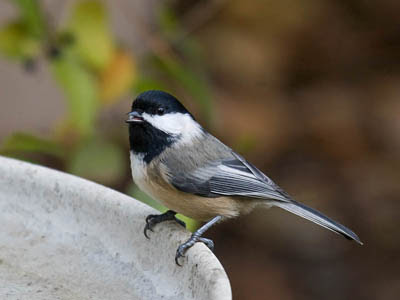 |
| Black-capped Chickadee is a resident breeder in the North. Greg Gillson. |
Start feeding birds in fall to attract and help local breeding birds
Summer and early fall generally have ample natural food to keep local breeding birds well fed. There are insects, fruit, and seeds.
However, as autumn continues on, natural foods start to dwindle. You will note many young birds visit your feeders in fall. The extra supply of food provided by your bird feeders may help more young birds survive these critical early weeks and months.
Pay attention and you can spot these birds-of-the-year. Younger birds tend to be less colorful and more streaked than adults. But this juvenile plumage doesn’t last long. Within a few weeks the young and adults of many species at your feeder may be hard to tell apart.
You may notice that some resident birds, such as nuthatches, chickadees, and jays, are grabbing food in autumn and flying off with it. They are caching the food–storing it and hiding it elsewhere. You will go through a lot of bird seed at this time. But these birds will eat this cache of food later in winter, when natural foods are running low.
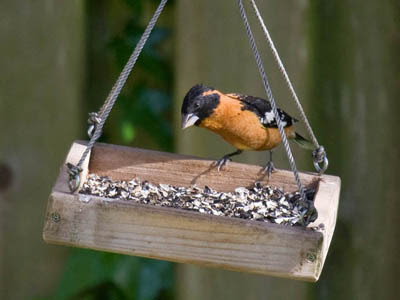 |
| Black-headed Grosbeaks are migrants through much of the West. Greg Gillson. |
Start feeding birds in fall to attract and help migrant birds
Your local resident birds will help migrant birds to find your bird feeder.
Migrant seed eating birds survived summer in boreal forests or other areas north of you. They fly all night. At dawn they seek a safe place to feed and rest.
While flying over your neighborhood in early morning, they may see or hear noisy resident birds at your feeder. Then they’ll drop in and spend a day or three before continuing on their migration.
Your feeders are very important refueling stops for these migrant birds. Set up your feeders in early fall to have more of these birds visit.
Depending upon the weather and wind, you may notice waves of migrant birds have arrived at your feeder overnight. Some days there may be few, other days many. They’ll remain until the winds are favorable to continue flying south.
Fall migration can actually start as early as July, but September and October are the peak, with migrants showing up at your feeder through November.
Keep track of which migrants are early migrants and which are later migrants–each species is different. And you may notice that adults and first-year birds may not migrate at the same time (usually adults migrate first).
 |
| White-crowned Sparrows are winter visitors in much of the US. Greg Gillson. |
Start feeding birds in fall to attract and help wintering birds
By early December the autumn migration is over. Migrant birds have arrived on their wintering grounds.
Birds that winter in your area will settle in where there is ample food, water, and protective cover. They will spend the entire winter and early spring in this small area.
If you already have your feeders set up in earlier fall to attract them, then birds will likely chose your immediate neighborhood in which to spend the winter.
However, if you wait until winter to set up your feeders, you will only attract those birds that already are in your neighborhood.
The earlier you set up your bird feeders in fall, the more numbers and different kinds of birds will remains through the winter.
Set up your bird feeder and start feeding birds in fall. When the cold days of winter arrive you’ll already have a lively bird feeder filled with a wide variety of birds for you to enjoy!

Wrapping Up
There are some persuasive arguments for feeding wild bird during autumn and winter:
During harsh winters with scarce natural food, feeders can provide a vital source of energy for birds, especially species that stay put year-round. This can help them maintain body temperature, build fat reserves, and survive until spring.
Some bird populations, particularly young birds or those weakened by illness, may be more vulnerable in winter. Feeders can offer them crucial support during this critical time.
Attracting birds to feeders can be a delightful experience for birdwatchers and nature enthusiasts, fostering a connection with the natural world.
Observing birds at feeders can be a fantastic learning experience for children and adults, teaching them about different species, their behaviors, and the importance of winter ecology.
Frequently Asked Questions
Do birds even come to feeders in the fall?
It’s true that you might see fewer birds visiting your feeders in the fall compared to other times of year, but that doesn’t necessarily mean they’ve lost interest! Here are some reasons why you might experience a dip in avian visitors:
Natural Food Abundance: Fall is a time of plenty for many birds, with abundant berries, seeds, and insects readily available. With this buffet spread in nature, feeders become less of a necessity, and birds may focus on foraging for these seasonal treats.
Migration: Many bird species take advantage of the plentiful fall food to fuel their southward migration. Once they’ve built up enough reserves, they might bypass your feeders altogether on their journey to warmer climates.
Fledgling Season: Late summer and early fall are also busy times for raising young. Adult birds are focused on feeding their chicks and teaching them to forage, so they might visit feeders less frequently.
Changing Preferences: As the days shorten and temperatures drop, some bird species switch to different food sources that provide more energy and fat. Your usual feeder fare might not be as appealing to them during this transition.
Feeder Competition: With fewer overall birds around, competition for resources at feeders can become more intense. Some species might be intimidated by more dominant birds, leading them to seek out quieter feeding grounds.
But, remember the idea is to get your feeders out during the fall so that you attract and keep birds visiting you all winter long.
Why isn’t my bird feeder attracting birds?
If your bird feeder isn’t attracting the feathered friends you were hoping for, don’t fret! There are many possible reasons why, and with a little troubleshooting, you can turn your feeder into a buzzing haven for avian activity. Here are some common culprits and potential solutions:
- Visibility: Choose a location where birds can easily spot the feeder. Avoid dense foliage or tall structures that might block their view.
- Safety: Place the feeder away from windows, predators like cats, and areas with high foot traffic or loud noises that might scare the birds.
- Shelter: Ideally, position the feeder near trees or shrubs where birds can take cover if they feel threatened.
- Type: Some feeders are designed for specific types of birds. If you’re not seeing the kinds you hoped for, try a different feeder style, like mesh for finches or a suet feeder for woodpeckers.
- Cleanliness: Dirty feeders can harbor bacteria and deter birds. Clean your feeder regularly with soap and water, and disinfect it periodically with a diluted bleach solution.
- Accessibility: Make sure the feeder is easy for birds to access. Avoid perches that are too slippery or narrow, and ensure the openings are appropriate for the size of the birds you hope to attract.
- Freshness: Expired or moldy food will repel birds. Choose high-quality seeds and replenish them regularly, especially during hot weather when seed spoilage is faster.
- Variety: Experiment with different types of seeds, nuts, fruits, and suet to cater to the preferences of various bird species in your area.
- Competition: If dominant birds like squirrels or jays are monopolizing the feeder, consider adding squirrel baffles or trying different feeder styles that discourage larger animals.
What happens if you stop feeding birds in winter?
Whether or not it’s harmful to stop feeding birds in winter is a complex question with no universal answer. The impact depends on several factors, including:
Bird Species: Different species have varying degrees of dependence on feeders and natural food sources in winter. Some, like chickadees and nuthatches, rely heavily on feeders for energy during harsh winters. Others, like jays and crows, are more resourceful and adaptable, readily finding food in nature.
Natural Food Availability: In areas with abundant natural food like berries, seeds, and insects, birds are less reliant on feeders. But in locations with severe winters and scarce natural resources, feeders can be a crucial lifeline.
Severity of Winter: Harsh winters with freezing temperatures and heavy snow can significantly limit birds’ access to natural food, making feeders even more critical for survival. Milder winters may have less impact if alternative food sources are available.
Individual Bird Conditions: Younger, weaker, or injured birds may struggle to compete for natural food resources in winter and be more dependent on feeders for survival.
Overall Bird Population: In areas with declining bird populations, providing supplemental food in winter can play a bigger role in their survival and recovery.
Here are some potential consequences of stopping bird feeding in winter:
Negative Impacts:
- Starvation: In severe winters with scarce natural food, some birds, especially vulnerable individuals, may starve if their primary food source disappears.
- Reduced Survival: Decreased body fat and energy reserves due to limited food access can negatively impact bird survival rates during harsh winters.
- Competition: Relying solely on natural food sources can lead to increased competition among birds, potentially harming weaker individuals.
- Loss of Habitat: Overdependence on feeders can discourage some birds from exploring and utilizing natural food sources, potentially weakening their foraging skills and long-term adaptability.
________________________________________________________________________________________________
Related Articles:
Quickly attract birds to your feeder
Secrets to feeding birds in winter
What birds come to feeders in winter?
What birds come to feeders in summer?
When to stop feeding birds in summer



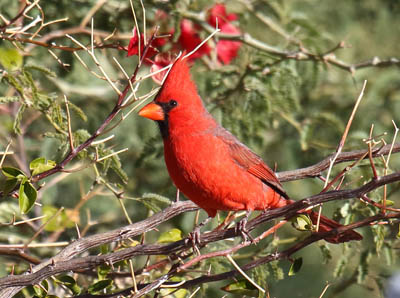
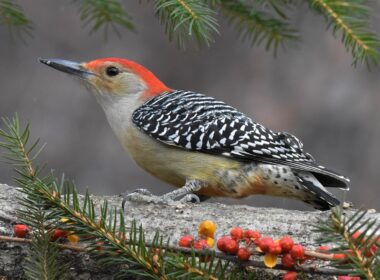
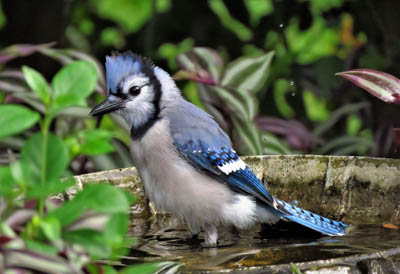
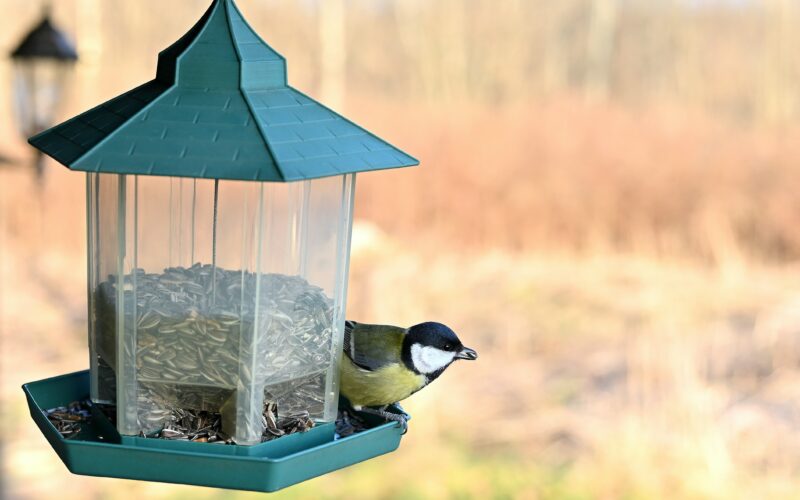

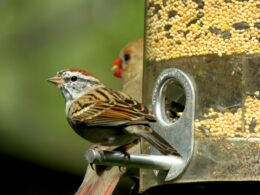
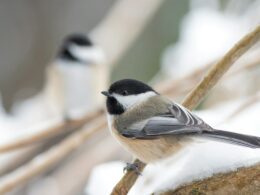
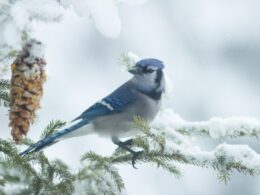
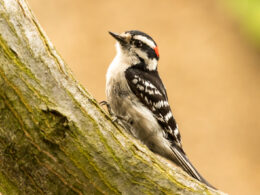
I like the work which you have placed in this article. This data is significant and superb. I might want to thank you for sharing this article here. wholesale landscaping supplies
Thank you for this info about migrating birds. I feed all year long but now I will keep a watchful eye for migrants this fall. I feed with black oil, sunflower seeds hulled, millet, peanuts and suet.. and hummingbird nectar.
You are feeding birds all the best foods–well done!
Here in NH, feeders in the September or October will attract bears, and your feeder will disappear! Local Audubon recommends waiting at least until Dec 1 before putting out feeders, later if the weather remains mild.
This article was very well researched & thought provoking! Thank you so much!
Yes. In bear country, you need to adapt.
You are welcome
Hi Raleigh NC – Nov 4 ,2022. I know there is a lull at feeders in Fall for us, but it seems it is lasting longer this year. I leave my feeders out year round for several years now. Have my faithful bluebirds daily at birdbaths. When does feeder activity start back?
Feeder activity starts back up when there is less natural food available. Each year will be slightly different, depending upon how well the summer produced.
Yes. In nh I put my feeder up Dec 1… no birds yet